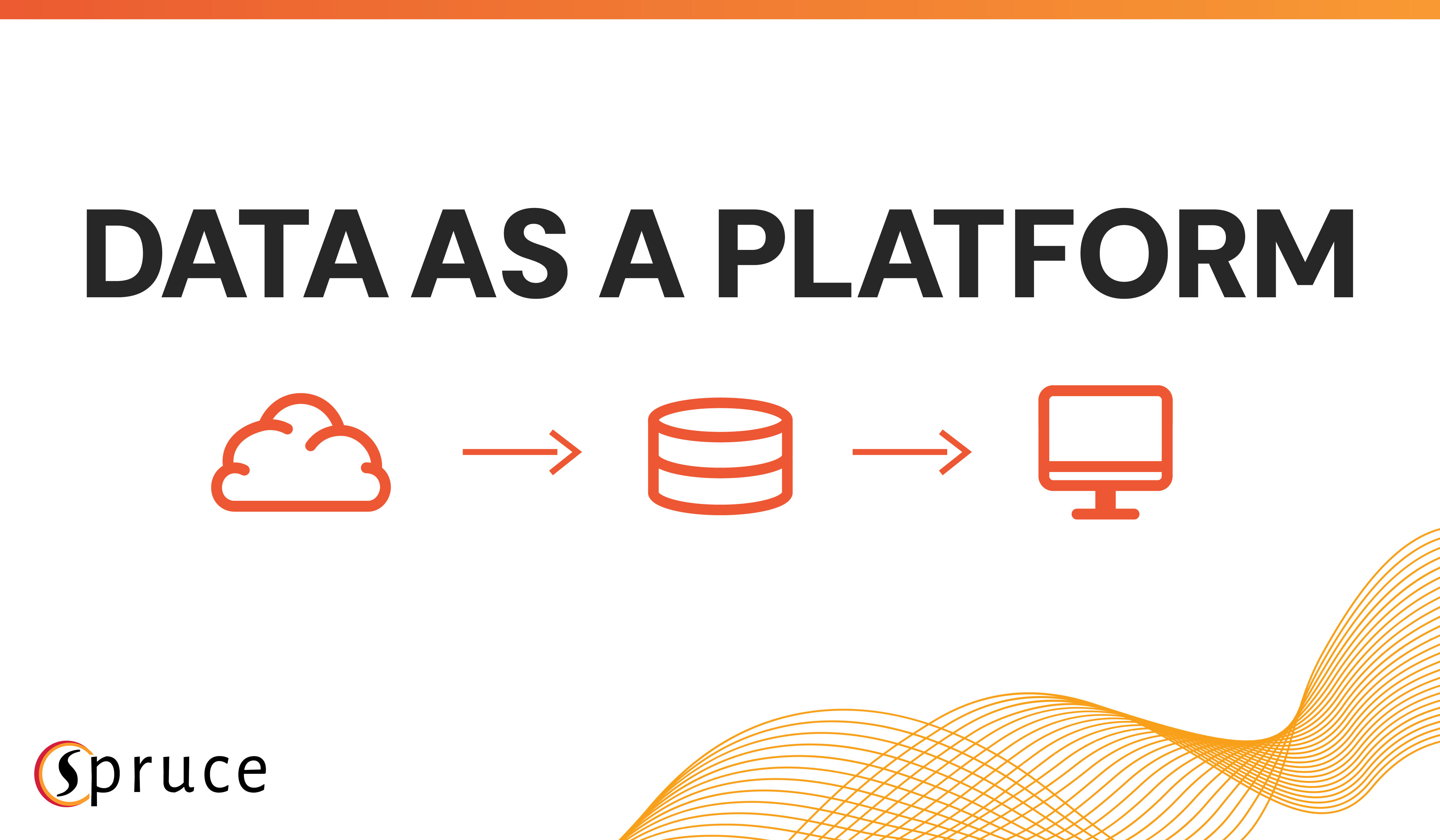Demystifying Data as a Platform (DaaP): A Comprehensive Guide

In today's data-driven world, organizations are constantly seeking ways to harness the power of their data to make informed decisions, drive innovation, and stay competitive. One approach that has gained significant traction in recent years is "Data as a Platform" or DaaP. At its core, DaaP is a strategic framework that treats data as a foundational asset for the organization. It involves centralizing and optimizing data resources, making data readily available, and providing tools and services for data management, analysis, and application development. In this comprehensive guide, we'll demystify DaaP, and explore its core principles, benefits, technical components, and real-world use cases.
Historical Context and Evolution of DaaP
The concept of Data as a Platform (DaaP) has evolved in response to the increasing complexity and volume of data generated by organizations over the years. It traces its roots back to the emergence of data warehousing in the 1980s when businesses began centralizing data for reporting purposes. With the rise of big data and cloud computing in the 2000s, DaaP expanded to accommodate diverse data types and leverage scalable cloud resources. Integrating data, streaming technologies, advanced analytics, and AI further transformed DaaP into a comprehensive solution for real-time managing, processing, and deriving insights from data.
Comparison with Traditional Data Management Approaches
DaaP represents a departure from traditional data management approaches in several key ways. Traditional data management often involves disparate and siloed data repositories, making it challenging to access and manage data cohesively. In contrast, DaaP centralizes data into a unified platform, simplifying data management and access.
Scalability is another critical distinction; traditional methods may struggle to adapt to growing data volumes, while DaaP leverages cloud resources for on-demand scalability. DaaP also excels in real-time data processing, enabling organizations to analyze data as it's generated or ingested, compared to traditional batch processing.
Moreover, DaaP's flexibility allows data to be ingested in its raw form, reducing the need for extensive data transformation upfront. Data governance and security are emphasized in DaaP, addressing potential compliance and security issues often seen in traditional data management.
Lastly, the true value of DaaP true value lies in its ability to not only facilitate analytics and reporting but also to empower organizations with actionable insights. By providing a seamless and real-time connection between data sources and end-users, a DaaP enables swift decision-making, automation, and the development of data-driven applications.
Understanding the Core Principles of DaaP
Data as a Platform embodies several fundamental principles that redefine data management by revolutionizing how organizations acquire, store, process, and leverage data:
Scalability and flexibility
DaaP adapts effortlessly to evolving data needs, scaling up or down as an organization grows. Its cloud integration ensures dynamic resource allocation, optimizing performance while controlling costs.
Data governance and security
DaaP prioritizes robust data governance and security. It enforces policies, safeguards data through encryption, and offers compliance measures, fostering trust and regulatory adherence.
Integration and interoperability
DaaP breaks down data silos by seamlessly integrating with diverse sources. It simplifies data access, sharing, and collaboration across departments and supports interoperability with external partners.
Analytics and insights
DaaP isn't just a data repository; it's a hub for advanced analytics and AI. It empowers organizations to extract actionable insights from data, driving innovation and informed decision-making.
Transformation of Data Management with DaaP
Now, let's delve deeper into how the holistic approach of DaaP fundamentally transforms data management and positively impacts an organization's data management strategy:
Revolutionizing Data Collection, Storage, and Processing
DaaP reimagines data collection, storage, and processing. Unlike traditional systems, it allows organizations to seamlessly ingest and store data in its raw form, reducing the need for extensive preprocessing. This agility ensures that data is readily available and adaptable to changing requirements, accelerating data-related tasks and reducing bottlenecks.
Streamlining Data Access and Sharing
DaaP simplifies data access and sharing, fostering collaboration across teams and departments. With centralized data, authorized users can access and share information effortlessly. It eliminates the complexity of navigating data silos, enabling faster decision-making and innovation through a unified data repository.
Facilitating Real-time Data Analysis
Real-time data analysis is a hallmark of DaaP. Traditional systems often struggle with processing data in real-time, but DaaP is designed for it. By enabling the rapid analysis of fresh data as it's generated or ingested, organizations gain a competitive edge. They can respond to market changes, customer behaviors, and emerging trends in real time, enhancing their agility.
Empowering Data-Driven Decision-Making
DaaP puts data directly in the hands of decision-makers. Offering advanced analytics and AI capabilities empowers organizations to make informed, data-driven decisions. This transformation enables businesses and institutions to navigate challenges and seize opportunities with unparalleled precision, ensuring a strategic advantage in today's data-centric landscape.
Improving Cost-Effectiveness and Efficiency
Cost-effectiveness and efficiency are hallmarks of DaaP implementation. By leveraging cloud resources and scalable infrastructure, organizations can optimize their data management costs. DaaP's agility reduces the need for extensive data preprocessing, saving time and resources. The streamlined data access and sharing capabilities also contribute to efficiency gains, ultimately enhancing the bottom line.
Key Markets for DaaP
The versatility of Data as a Platform (DaaP) extends to various industries, offering tailored solutions to address unique challenges. Here are some compelling use cases that showcase how DaaP is making a difference:
Education Sector: Transforming Data Management in Schools and Universities
In the education sector, DaaP is revolutionizing data management in schools and universities. Educational institutions handle vast amounts of data, from student records and enrollment information to grades and academic performance metrics. DaaP simplifies the management of this data by centralizing it, ensuring data quality (which includes concepts like validation, transformation, and enhancement) and security, as well as streamlining access for educators and administrators. With DaaP, schools and universities can efficiently track student progress, automate grading processes, and make data-driven decisions to enhance teaching methods and optimize resource allocation.
Healthcare: Leveraging DaaP for Patient Data Management
Healthcare providers face the daunting task of managing vast volumes of patient data while ensuring privacy and compliance with healthcare regulations. DaaP plays a crucial role in transforming patient data management by securely centralizing electronic health records (EHRs), lab results, and medical histories. This consolidation enables healthcare professionals to access up-to-date patient information in real time, leading to more accurate diagnoses, personalized treatment plans, and improved patient outcomes. DaaP also enhances data security, ensuring patient confidentiality, and streamlines administrative processes for healthcare institutions.
Financial Services: Enhancing Risk Assessment and Fraud Detection
The financial services industry relies on data for risk assessment and fraud detection. DaaP brings efficiency and accuracy to these critical processes. By integrating data from various sources, including transaction records, customer profiles, and market data, financial institutions can conduct comprehensive risk assessments in real time. DaaP's analytics capabilities enable the identification of suspicious activities and potential fraud, helping banks and financial organizations protect their assets and customers. Furthermore, DaaP supports compliance with financial regulations by ensuring data accuracy and auditability.
These real-world use cases illustrate how DaaP is not a one-size-fits-all solution but rather a versatile platform that can be tailored to address the specific data management needs of different industries.
Addressing Complex Data Challenges with DaaP
Complex data challenges have long been a barrier to effective data management. Data as a Platform (DaaP) offers innovative solutions to these challenges, reshaping the way organizations tackle data issues:
Data Silos and Fragmentation
Data Silos have plagued organizations, leading to inefficiencies and missed opportunities. DaaP takes a sledgehammer to these silos by centralizing data, making it accessible from a single source. Siloed data is consolidated, eliminating redundancy and ensuring consistency. This transformation empowers teams with a unified data ecosystem, streamlining operations and fostering collaboration. Data fragmentation is no longer an obstacle, as DaaP enables a holistic view of your data landscape.
Data Privacy and Compliance
Data privacy and compliance are paramount in an era of increasing regulations. DaaP addresses these concerns proactively. It enforces robust data governance, ensuring that data is handled with care and according to regulations like GDPR, HIPAA, or CCPA. With encryption, access controls, and audit trails, DaaP safeguards sensitive information, providing peace of mind to organizations that their data is secure and compliant with data protection laws.
Managing Diverse Data Sources
In today's data-rich environment, organizations deal with an array of data sources, from structured databases to unstructured text and multimedia. DaaP excels in managing diverse data sources. It acts as a central hub where data from various origins, whether on-premises or in the cloud, can be ingested, processed, and analyzed. This versatility eliminates data source compatibility issues, allowing organizations to make the most of their diverse data assets.
Handling Large-Scale Data Sets
As data volumes continue to skyrocket, traditional systems often buckle under the weight of large-scale data sets. DaaP, designed with scalability in mind, thrives in handling vast data quantities. It leverages cloud resources and horizontal scaling to process and analyze massive data sets efficiently. Whether you're dealing with big data analytics, IoT-generated data, or data from multiple channels, DaaP ensures that handling large-scale data is no longer an obstacle but an opportunity.
DAAP, More than Data Management
In closing, it’s important to realize that DaaP is more than a data management platform; it's a game-changer. It is the solution to age-old data challenges, the bridge that connects data silos, and the catalyst for innovation. DaaP enables organizations to harness data as a strategic asset, providing actionable insights and driving success. As you consider the future of your data management strategy, remember that DaaP stands at the forefront of data transformation, ready to propel your organization into a new era of data-driven excellence.
Embrace DaaP with Spruce Technology
If you're ready to embark on a transformative journey in data management and harness the full potential of your data assets, don't hesitate to reach out to Spruce. We're here to guide you through the world of Data as a Platform (DaaP) and help you tailor it to your organization's unique needs. The future of data-driven success is just a step away. Contact us today to learn more about DaaP and embark on a journey toward data excellence with the support of Spruce's dedicated team.

